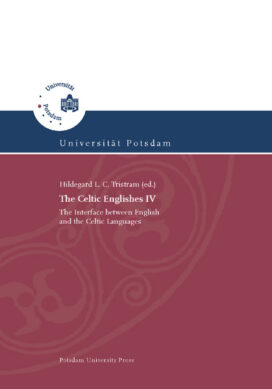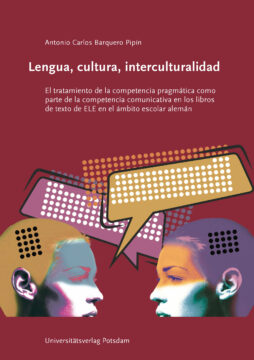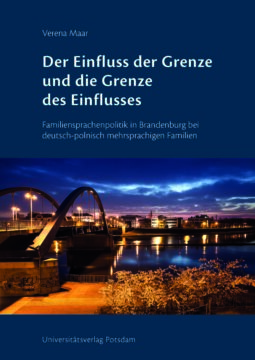What is “Celtic” and what is universal in the “Celtic Englishes?” This was the central concern of the fourth and final Colloquium of studies on language contact between English and the Celtic languages at the University of Potsdam in September 2004. The contributions to this volume discuss the “Celtic” peculiarities of Standard Eng-lish in England and in Ireland (North and South). They also examine the perceived “Celticity” of personal names in the “Celtic” countries (Ireland,Wales,Cornwall,Brittany). Moreover, they put emphasis on specific grammatical features such as the expression of perfectivity, relativity, intensification and the typological shift of verbal word formation from syntheticity to analycity as well as the emergence of universal contact trends shared by Celtic, African and Indian Englishes. Thus, the choice of contributors and the scope of their articles makes Celtic Englishes IV an invaluable handbook for scholarly work in the field of the English – Celtic relations.
Hildegard L Tristram
Hildegard L Tristram (eds.)
The interface between English and the Celtic languages ; proceedings of the fourth international colloquium on the "Celtic Englishes" held at the University of Potsdam in Golm (Germany) from 22-26 September 2004
ISBN: 978-3-939469-06-3
350 pages
Release year 2006
18,00 €
Non-taxable transaction according to § 1 (1) UStG/VAT Act in combination with § 2 (3) UStG/VAT Act a. F. Providing this service, the University of Potsdam does not constitute a Betrieb gewerblicher Art/Commercial Institution according to § 1 (1) No. 6 or § 4 KStG/Corporate Tax Act. If the legal characterization of our business is changed to a commercial institution subsequently, we reserve the right to invoice VAT additionally. zzgl. Versandkosten
What is “Celtic” and what is universal in the “Celtic Englishes?” This was the central concern of the fourth and final Colloquium of studies on language contact between English and the Celtic languages at the University of Potsdam in September 2004. The contributions to this volume discuss the “Celtic” peculiarities of Standard Eng-lish in England and in Ireland (North and South). They also examine the perceived “Celticity” of personal names in the “Celtic” countries (Ireland,Wales,Cornwall,Brittany). Moreover, they put emphasis on specific grammatical features such as the expression of perfectivity, relativity, intensification and the typological shift of verbal word formation from syntheticity to analycity as well as the emergence of universal contact trends shared by Celtic, African and Indian Englishes. Thus, the choice of contributors and the scope of their articles makes Celtic Englishes IV an invaluable handbook for scholarly work in the field of the English – Celtic relations.
Recommended Books
-
 2020
2020Lengua, cultura, interculturalidad
17,50 €Non-taxable transaction according to § 1 (1) UStG/VAT Act in combination with § 2 (3) UStG/VAT Act a. F. Providing this service, the University of Potsdam does not constitute a Betrieb gewerblicher Art/Commercial Institution according to § 1 (1) No. 6 or § 4 KStG/Corporate Tax Act. If the legal characterization of our business is changed to a commercial institution subsequently, we reserve the right to invoice VAT additionally.
zzgl. Versandkosten
Add to cart -
 2024
2024Der Einfluss der Grenze und die Grenze des Einflusses
22,50 €Non-taxable transaction according to § 1 (1) UStG/VAT Act in combination with § 2 (3) UStG/VAT Act a. F. Providing this service, the University of Potsdam does not constitute a Betrieb gewerblicher Art/Commercial Institution according to § 1 (1) No. 6 or § 4 KStG/Corporate Tax Act. If the legal characterization of our business is changed to a commercial institution subsequently, we reserve the right to invoice VAT additionally.
zzgl. Versandkosten
Add to cart -
 2007
2007Phonology Limited
9,00 €Non-taxable transaction according to § 1 (1) UStG/VAT Act in combination with § 2 (3) UStG/VAT Act a. F. Providing this service, the University of Potsdam does not constitute a Betrieb gewerblicher Art/Commercial Institution according to § 1 (1) No. 6 or § 4 KStG/Corporate Tax Act. If the legal characterization of our business is changed to a commercial institution subsequently, we reserve the right to invoice VAT additionally.
zzgl. Versandkosten
Add to cart -
 2000
2000Peter Svenonius, Artemis Alexiadou, David Adger, Joao Costa, Thomas Ernst, Hubert Haider, Joel M. Hoffman, Christopher Laenzlinger, Satu Manninen, George Tsoulas, Milena Vegnaduzzo
Adverbs and Adjunction
8,00 €Non-taxable transaction according to § 1 (1) UStG/VAT Act in combination with § 2 (3) UStG/VAT Act a. F. Providing this service, the University of Potsdam does not constitute a Betrieb gewerblicher Art/Commercial Institution according to § 1 (1) No. 6 or § 4 KStG/Corporate Tax Act. If the legal characterization of our business is changed to a commercial institution subsequently, we reserve the right to invoice VAT additionally.
zzgl. Versandkosten
Add to cart
Publisher Info
Contact
Potsdam University Library
University Press
Am Neuen Palais 10
14476 Potsdam
Germany
verlag@uni-potsdam.de
0331 977-2094
0331 977-2292





